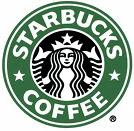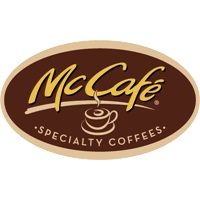Here is Warren’s annual missive
. This is the value investing instruction manual. A word of warning: Be careful about relying on the media to frame his comments for you. Quite often in the past they have taken snip-its that sound good on TV but when you read them again in the context they were written, do not necessarily convey the same sentiment.
Berkshire Hathaway Annual Letter (you need Adobe Reader to view it)
Some commentary that is relative to recent news events:
Real Estate:
“The slowdown in residential real estate activity stems in part from the weakened lending
practices of recent years. The “optional” contracts and “teaser” rates that have been popular have allowed borrowers to make payments in the early years of their mortgages that fall far short of covering normal interest costs.
Naturally, there are few defaults when virtually nothing is required of a borrower. As a cynic has said, “A rolling loan gathers no loss.” But payments not made add to principal, and borrowers who can’t afford normal monthly payments early on are hit later with above-normal monthly obligations. This is the Scarlett O’Hara scenario: “I’ll think about that tomorrow.” For many home owners, “tomorrow” has now arrived. Consequently there is a huge overhang of offerings in several of HomeServices’ markets. Nevertheless, we will be seeking to purchase additional brokerage operations. A decade from now, HomeServices will almost certainly be much larger.”
On A Replacement:
” I have told you that Berkshire has three outstanding candidates to replace me as CEO and that the Board knows exactly who should take over if I should die tonight. Each of the three is much younger than I. The directors believe it’s important that my successor have the prospect of a long tenure. Frankly, we are not as well-prepared on the investment side of our business. There’s a history here: At one time, Charlie was my potential replacement for investing, and more recently Lou Simpson has filled that slot. Lou is a top-notch investor with an outstanding long-term record of managing GEICO’s equity portfolio. But he is only six years younger than I. If I were to die soon, he would fill in magnificently for a short period. For the long-term, though, we need a different answer. At our October board meeting, we discussed that subject fully. And we emerged with a plan, which I will carry out with the help of Charlie and Lou.
Under this plan, I intend to hire a younger man or woman with the potential to manage a very large portfolio, who we hope will succeed me as Berkshire’s chief investment officer when the need for someone to do that arises. As part of the selection process, we may in fact take on several candidates. Picking the right person(s) will not be an easy task. It’s not hard, of course, to find smart people, among them individuals who have impressive investment records. But there is far more to successful longterm investing than brains and performance that has recently been good.
Over time, markets will do extraordinary, even bizarre, things. A single, big mistake could wipe out a long string of successes. We therefore need someone genetically programmed to recognize and avoid serious risks, including those never before encountered. Certain perils that lurk in investment strategies cannot be spotted by use of the models commonly employed today by financial institutions.
Temperament is also important. Independent thinking, emotional stability, and a keen understanding of both human and institutional behavior is vital to long-term investment success. I’ve seen a lot of very smart people who have lacked these virtues.
Finally, we have a special problem to consider: our ability to keep the person we hire. Being able to list Berkshire on a resume would materially enhance the marketability of an investment manager. We will need, therefore, to be sure we can retain our choice, even though he or she could leave and make much more money elsewhere.
There are surely people who fit what we need, but they may be hard to identify. In 1979, Jack Byrne and I felt we had found such a person in Lou Simpson. We then made an arrangement with him whereby he would be paid well for sustained overperformance. Under this deal, he has earned large amounts. Lou, however, could have left us long ago to manage far greater sums on more advantageous terms. If money alone had been the object, that’s exactly what he would have done. But Lou never considered such a move. We need to find a younger person or two made of the same stuff.
* * * * * * * * * * * *
The good news: At 76, I feel terrific and, according to all measurable indicators, am in excellent health. It’s amazing what Cherry Coke and hamburgers will do for a fellow.
Some Changes on Berkshire’s Board
The composition of our board will change in two ways this spring. One change will involve the Chace family, which has been connected to Berkshire and its predecessor companies for more than a century. In 1929, the first Malcolm G. Chace played an important role in merging four New England textile operations into Berkshire Fine Spinning Associates. That company merged with Hathaway Manufacturing in 1955 to form Berkshire Hathaway, and Malcolm G. Chace, Jr. became its chairman.
Early in 1965, Malcolm arranged for Buffett Partnership Ltd. to buy a key block of Berkshire shares and welcomed us as the new controlling shareholder of the company. Malcolm continued as non executive chairman until 1969. He was both a wonderful gentleman and helpful partner.
That description also fits his son, Malcolm “Kim” Chace, who succeeded his father on Berkshire’s board in 1992. But last year Kim, now actively and successfully running a community bank that he founded in 1996, suggested that we find a younger person to replace him on our board. We have done so, and Kim will step down as a director at the annual meeting. I owe much to the Chaces and wish to thank
Kim for his many years of service to Berkshire. In selecting a new director, we were guided by our long-standing criteria, which are that board members be owner-oriented, business-savvy, interested and truly independent. I say “truly” because many directors who are now deemed independent by various authorities and observers are far from that, relying heavily as they do on directors’ fees to maintain their standard of living. These payments, which come in many forms, often range between $150,000 and $250,000 annually, compensation that may approach or even exceed all other income of the “independent” director. And – surprise, surprise – director compensation has soared in recent years, pushed up by recommendations from corporate America’s favorite consultant, Ratchet, Ratchet and Bingo. (The name may be phony, but the action it conveys is not.). Charlie and I believe our four criteria are essential if directors are to do their job – which, by law, is to faithfully represent owners. Yet these criteria are usually ignored. Instead, consultants and CEOs seeking board candidates will often say, “We’re looking for a woman,” or “a Hispanic,” or “someone from abroad,” or what have you. It sometimes sounds as if the mission is to stock Noah’s ark. Over the years I’ve been queried many times about potential directors and have yet to hear anyone ask, “Does he think like an intelligent owner?”
The questions I instead get would sound ridiculous to someone seeking candidates for, say, football team, or an arbitration panel or a military command. In those cases, the selectors would look for people who had the specific talents and attitudes that were required for a specialized job. At Berkshire, we are in the specialized activity of running a business well, and therefore we seek business judgment.
That’s exactly what we’ve found in Susan Decker, CFO of Yahoo!, who will join our board at the annual meeting. We are lucky to have her: She scores very high on our four criteria and additionally, at 44, is young – an attribute, as you may have noticed, that your Chairman has long lacked. We will seek more young directors in the future, but never by slighting the four qualities that we insist upon.”
Misc.
“Berkshire will pay about $4.4 billion in federal income tax on its 2006 earnings. In its last fiscal year the U.S. Government spent $2.6 trillion, or about $7 billion per day. Thus, for more than half of on day, Berkshire picked up the tab for all federal expenditures, ranging from Social Security and Medicare payments to the cost of our armed services. Had there been only 600 taxpayers like Berkshire, no one else in America would have needed to pay any federal income or payroll taxes.”
“Our federal return last year, we should add, ran to 9,386 pages. To handle this filing, state and foreign tax returns, a myriad of SEC requirements, and all of the other matters involved in running Berkshire, we have gone all the way up to 19 employees at World Headquarters. This crew occupies 9,708 square feet of space, and Charlie – at World Headquarters West in Los Angeles – uses another 655 square feet. Our home-office payroll, including benefits and counting both locations, totaled $3,531,978 last year. We’re careful when spending your money.
Corporate bigwigs often complain about government spending, criticizing bureaucrats who they say spend taxpayers’ money differently from how they would if it were their own. But sometimes the financial behavior of executives will also vary based on whose wallet is getting depleted. Here’s an illustrative tale from my days at Salomon. In the 1980s the company had a barber, Jimmy by name, who came in weekly to give free haircuts to the top brass. A manicurist was also on tap. Then, because of a cost-cutting drive, patrons were told to pay their own way. One top executive (not the CEO) who had previously visited Jimmy weekly went immediately to a once-every-three-weeks schedule.”
“Every now and then Charlie and I catch on early to a tide-like trend, one brimming over with commercial promise. For example, though American Airlines (with its “miles”) and American Express (with credit card points) are credited as being trailblazers in granting customers “rewards,” Charlie and I were far ahead of them in spotting the appeal of this powerful idea. Excited by our insight, the two of us jumped into the reward business way back in 1970 by buying control of a trading stamp operation, Blue Chip Stamps. In that year, Blue Chip had sales of $126 million, and its stamps papered California. In 1970, indeed, about 60 billion of our stamps were licked by savers, pasted into books, and taken to Blue Chip redemption stores. Our catalog of rewards was 116 pages thick and chock full of tantalizing items. When I was told that even certain brothels and mortuaries gave stamps to their patrons, I felt I had finally found a sure thing
Well, not quite. From the day Charlie and I stepped into the Blue Chip picture, the business went straight downhill. By 1980, sales had fallen to $19.4 million. And, by 1990, sales were bumping along at $1.5 million. No quitter, I redoubled my managerial efforts.
Sales then fell another 98%. Last year, in Berkshire’s $98 billion of revenues, all of $25,920 (no zeros omitted) came from Blue Chip. Ever hopeful, Charlie and I soldier on.”
CEO Comp.
“At Berkshire, after all, I am a one-man compensation committee who determines the salaries and incentives for the CEOs of around 40 significant operating businesses. How much time does this aspect of my job take? Virtually none. How many CEOs have voluntarily left us for other jobs in our 42-year history? Precisely none.
Berkshire employs many different incentive arrangements, with their terms depending on such elements as the economic potential or capital intensity of a CEO’s business. Whatever the compensation arrangement, though, I try to keep it both simple and fair. When we use incentives – and these can be large – they are always tied to the operating results for which a given CEO has authority. We issue no lottery tickets that carry payoffs unrelated to business performance. If a CEO bats .300, he gets paid for being a .300 hitter, even if circumstances outside of his control cause Berkshire to perform poorly. And if he bats .150, he doesn’t get a payoff just because the successes of others have enabled Berkshire to prosper mightily. An example: We now own $61 billion of equities at Berkshire, whose value can easily rise or fall by 10% in a given year. Why in the world should the pay of our operating executives be affected by such $6 billion swings, however important the gain or loss may be for shareholders?”








